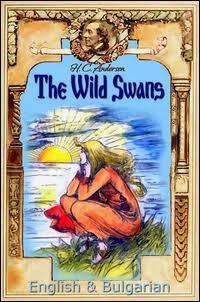8.4 /10 1 Votes
Original title "De vilde svaner" Publication type Fairy tale collection Media type Print Country Denmark | 4.2/5 Goodreads Publisher C. A. Reitzel Originally published 2 October 1838 Genre Fairy tale | |||||||||||||||||||||||||||||||||
 | ||||||||||||||||||||||||||||||||||
Published in Fairy Tales Told for Children. New Collection. First Booklet. 1838. Similar Works by Hans Christian Andersen, Children's literature | ||||||||||||||||||||||||||||||||||
The wild swans story colouring book by hans christian andersen and helen crawford white flip through
The Wild Swans is a literary fairy tale by Hans Christian Andersen about a princess who rescues her eleven brothers from a spell cast by an evil queen. The tale was first published on 2 October 1838 as the first installment in Andersen's Fairy Tales Told for Children by C. A. Reitzel in Copenhagen, Denmark. It has been adapted to various media including ballet, television, and film.
Contents
- The wild swans story colouring book by hans christian andersen and helen crawford white flip through
- Hans christian andersen the wild swans
- Synopsis
- Adaptations
- References
Hans christian andersen the wild swans
Synopsis
In a faraway kingdom, there lives a widowed king with his twelve children: eleven princes and one princess. One day, he decides to remarry. He marries a wicked queen who was a witch. Out of spite, the queen turns her eleven stepsons into swans (they are allowed to become human by night) and forces them to fly away. The queen then tries to bewitch their 15-year-old sister, Elisa, but Elisa's goodness is too strong for this, so the queen has Elisa banished. The brothers carry Elisa to safety in a foreign land where she is out of the reach of her stepmother.
There, Elisa is guided by the queen of the fairies to gather stinging nettles in graveyards to knit into shirts that will eventually help her brothers regain their human shapes. Elisa endures painfully blistered hands from nettle stings, and she must also take a vow of silence for the duration of her task, for speaking one word will kill her brothers. The king of another faraway land happens to come across the mute Elisa and falls in love with her. He grants her a room in his castle where she continues her knitting. Eventually he proposes to crown her as his queen and wife, and she accepts.
However, the Archbishop is chagrined because he thinks Elisa is herself a witch, but the king will not believe him. One night Elisa runs out of nettles and is forced to collect more in a nearby church graveyard where the Archbishop is watching. Ghoulish spirits that devour the bodies of the dead are also in the churchyard, and the archbishop believes that Elisa is in league with them. He reports the incident to the king as proof of witchcraft. The statues of the saints shake their heads in protest, but the Archbishop misinterprets this sign as confirmation of Elisa's guilt. The Archbishop orders to put Elisa on trial for witchcraft. She can speak no word in her defense and is sentenced to death by burning at the stake.
The brothers discover Elisa's plight and try to speak to the king but fail, thwarted by the rising sun. Even as the tumbril bears Elisa away to execution, she continues knitting, determined to keep it up to the last moment of her life. This enrages the people, who are on the brink of snatching and destroying the shirts when the swans descend and rescue Elisa. The people interpret this as a sign from Heaven that Elisa is innocent, but the executioner still makes ready for the burning. When Elisa throws the shirts over the swans, her brothers return to their human forms. (Sadly, the youngest brother has a swan's wing instead of an arm, as Elisa did not have time to finish one sleeve of his shirt.) Elisa is now free to speak and tell the truth, but she faints from exhaustion, so her brothers explain. As they do so, the firewood around Elisa's stake miraculously takes root and bursts into flowers. The king plucks the topmost flower and presents it to Elisa, and they are married.
